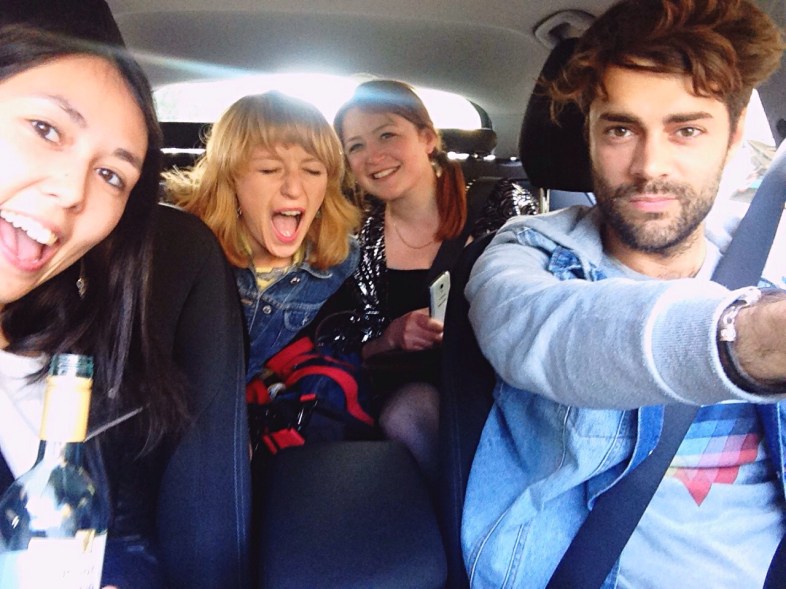
Earlier this year, an article in New York Magazine emerged, suggesting that there are four different types of introversion. While I disagree with the specific categories of introversion that the article suggested, I do agree that there are four different types – as Carl Jung originally theorized.
It’s not currently trendy to be an extrovert. But, as an extrovert myself, I didn’t see that as reason enough to not also explore the different types of extroversion. Just as introverts are not all alike, neither are extroverts. Jung sorted both social orientations into four distinct categories. Here’s what he had to say about the different types of extroverts.
Extroverted Sensors
Extroverted sensors are energized and inspired by the physical world that surrounds them. They are keenly in tune with every sight, sound, smell, taste and touch that enters their awareness – they gain energy by engaging in each new sensory experience. These extroverts may be particularly interested in athletics and other physically intense experiences. They take in people the way they take in everything else – by noticing how people look, smell, sound and hold themselves. Their preferred method of socializing is one in which they are sharing experiences with other people – they’d rather bond over doing something fun together than over a long conversation.
What extroverted sensors love about social gatherings is the intense stimulation of being introduced to new people whom they haven’t ‘taken in’ before. These extroverts particularly enjoy the sensory stimulation that clubs, raves and other such entertainment venues provide – they can almost physically feel the energy that is present in such environments.
Extroverted Sensing types are: ESTPs and ESFPs.
Introverted types that use extroverted sensing as a secondary mode of analysis are: ISTPs and ISFPs.
Extroverted Feelers
Extroverted feelers are the most stereotypically extroverted extroverts in that they gain energy primarily through interacting with people. They enjoy listening to, learning about and sharing experiences with others in just about any fashion – be it a long, in-depth conversation or a simple exchange of small talk. Others’ joy and pain is their joy and pain. Though they certainly require alone time every once in a while (all extroverts do), extroverted feelers require the least amount of alone time out of all extroverted types. People are their main joy and inspiration in life and it doesn’t matter how or in what capacity they’re interacting with others – as long as there’s a plethora of people present whose energy they can feed off.
What extroverted feelers love about social gatherings is the chance to interact with various people, learn about the lives of those people and form new interpersonal connections. They also enjoy the validation they receive from others in social situations and they feed off the positive social energy that abounds. At a social gathering, you will usually find them chatting with many different people and making sure everyone feels comfortable and happy.
Extroverted Feeling types are: ESFJs and ENFJs.
Introverted types that use extroverted feeling as a secondary mode of analysis are: ISFJs and INFJs.
Extroverted Intuitives
Extroverted intuitives are the least stereotypically extroverted extroverts. They gain energy primarily through exploring abstract ideas about the world and speculating over various possibilities for the future. They are extroverts primarily in that their thoughts are oriented externally, toward the world of experiences they could have. These extroverts feed off the mental energy of others in order to form new ideas and come to intellectual conclusions. They particularly enjoy engaging in friendly debates and bouncing ideas off others. If others are uninterested in engaging in such conversations, the extroverted intuitive is likely to go engage their plans and ideas alone.
Extroverted intuitives often enjoy speculating about how a social gathering might go more than they enjoy the actual social gathering itself. They are maximally energized by the feeling that ‘Anything could happen.’ At a social gathering, you are likely to find extroverted intuitives excitedly discussing an idea in the corner of a room with someone who intrigues them. They may also spur friendly debates or intellectual conversations with a group.
Extroverted Intuitive types are: ENTPs and ENFPs.
Introverted types that use extroverted intuition as a secondary mode of analysis are: INTPs and INFPs.
Extroverted Thinkers
Extroverted thinkers are the most structured and decisive extroverts. They aim to impose logical order on their external environment in as efficient a manner as possible. These extroverts are goal-oriented and aggressive – they see a clear path between where they are and where they want to be and they are perfectly comfortable navigating their environments in any means possible in order to get there. They gain energy through working with others to achieve their goals and taking hold of those hard-earned achievements. They are not the warmest extroverts, but they do genuinely enjoy the company of others and they are primarily motivated by external achievements.
What extroverted thinkers enjoy about social gatherings are the networking opportunities they present, as well as the opportunity to gauge their own achievements and social status against others’ (not necessarily in a petty way, but as a means of benchmarking their own progress). These types will often be found trying to ‘charm’ or entice others who can help them professionally, as they almost always have business on their mind.
Extroverted Thinking types are: ESTJs and ENTJs.
Introverted types that use extroverted intuition as a secondary mode of analysis are: ISTJs and INTJs.
Note:
It is important to note that Jung believed everyone embodied both extroverted and introverted traits. Therefore, an extroverted thinker may also be an introverted intuitive. Or, an extroverted sensor may also be an introverted feeler.
In fact, Jung believed that we all possess two extroverted cognitive functions and two introverted cognitive functions. Therefore, an extroverted intuitive may also be an extroverted thinker, to a lesser degree. However, some of these functions are mutually exclusive (For example, an extroverted sensor cannot also be an extroverted intuitive – though the two have traits that overlap). For an in-depth explanation of the Jungian cognitive functions, click here.![]()






